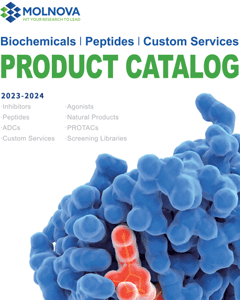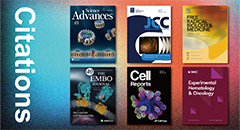
Aplaviroc hydrochloride
CAS No. 461023-63-2
Aplaviroc hydrochloride( AK-602 | GW 873140 | ONO-4128 | GSK-873140 )
Catalog No. M14551 CAS No. 461023-63-2
Aplaviroc (GSK-873140;GW 873140;AK-602;ONO-4128) is a potent, noncompetitive, allosteric antagonist of the CCR5 receptor.
Purity : >98% (HPLC)
 COA
COA
 Datasheet
Datasheet
 HNMR
HNMR
 HPLC
HPLC
 MSDS
MSDS
 Handing Instructions
Handing Instructions
| Size | Price / USD | Stock | Quantity |
| 5MG | 284 | Get Quote |


|
| 50MG | 1341 | Get Quote |


|
| 100MG | 2124 | Get Quote |


|
| 200MG | Get Quote | Get Quote |


|
| 500MG | Get Quote | Get Quote |


|
| 1G | Get Quote | Get Quote |


|
Biological Information
-
Product NameAplaviroc hydrochloride
-
NoteResearch use only, not for human use.
-
Brief DescriptionAplaviroc (GSK-873140;GW 873140;AK-602;ONO-4128) is a potent, noncompetitive, allosteric antagonist of the CCR5 receptor.
-
DescriptionAplaviroc (GSK-873140;GW 873140;AK-602;ONO-4128) is a potent, noncompetitive, allosteric antagonist of the CCR5 receptor with pKb of 8.6; blocks the calcium response effects of CCR5 activation by CCL5, and potently blocks in vitro the infection of R5-tropic HIV-1 (R5-HIV-1) at subnanomolar IC50.HIV Infection Phase 3 Discontinued.
-
In VitroAplaviroc exerts potent activity against three wild-type R5 HIV-1 strains (HIV-1Ba-L, HIV-1JRFL and HIV-1MOKW) with IC50 values of 0.1 to 0.4 nM. Aplaviroc is substantially more potent than two previously published CCR5 inhibitors, E921/TAK-779 and AK671/SCH-C. Aplaviroc suppresses the infectivity and replication of two HIV-1MDR variants, HIV-1MM and HIV-1JSL, at extremely low concentrations (IC50 values of 0.4 to 0.6 nM). Aplaviroc binds to CCR5 with high affinity. The Kd values thus determined for Aplaviroc, E913, E921/TAK-779, and AK671/SCH-C are 2.9±1.0, 111.7±3.5, 32.2±9.6, and 16.0±1.5 nM, respectively. Aplaviroc potently blocks rgp120/sCD4 binding to CCR5 with an IC50 value of 2.7 nM. These results suggest that the potent activity of Aplaviroc against R5 HIV-1 stems from its binding to ECL2B and/or its vicinity with high affinity, resulting in inhibition of gp120/CD4 binding to CCR5.
-
In VivoThe concentration of Aplaviroc (AK602) reached the maximal concentration immediately after intraperitoneal administration and decreased rapidly.Aplaviroc (AK602, 60 mg/kg, bid, daily) suppresses R5 HIV-1 viremia in hu-PBMC-NOG mice. Animal Model:hu-PBMC-NOG mice.Dosage:60 mg/kg.Administration:Single intraperitoneal administration, bid, daily.Result:The numbers of CD4+ cells/μL in saline-treated mice were significantly less than those of AK602-treated, ddI-treated, or uninfected mice.
-
SynonymsAK-602 | GW 873140 | ONO-4128 | GSK-873140
-
PathwayGPCR/G Protein
-
TargetChemokine Receptor
-
RecptorChemokine Receptor
-
Research AreaInfection
-
IndicationHIV Infection
Chemical Information
-
CAS Number461023-63-2
-
Formula Weight614.18
-
Molecular FormulaC33H44ClN3O6
-
Purity>98% (HPLC)
-
SolubilityIn Vitro:?DMSO : 200 mg/mL (325.64 mM)
-
SMILESCCCCN1C(=O)C(NC(=O)C12CCN(CC2)CC3=CC=C(C=C3)OC4=CC=C(C=C4)C(=O)O)C(C5CCCCC5)O.Cl
-
Chemical Name4-[4-[[(3R)-1-butyl-3-[(R)-cyclohexyl(hydroxy)methyl]-2,5-dioxo-1,4,9-triazaspiro[5.5]undecan-9-yl]methyl]phenoxy]benzoic acid hydrochloride
Shipping & Storage Information
-
Storage(-20℃)
-
ShippingWith Ice Pack
-
Stability≥ 2 years
Reference
1. Watson C, et al. Mol Pharmacol. 2005 Apr;67(4):1268-82.
2. Lalezari J, et al. AIDS. 2005 Sep 23;19(14):1443-8.
3. Adkison KK, et al. Antimicrob Agents Chemother. 2005 Jul;49(7):2802-6.
4. Nakata H, et al. Antimicrob Agents Chemother. 2008 Jun;52(6):2111-9.
molnova catalog



related products
-
VUF11207 fumarate (b...
A potent CXCR7 (ACKR3) agonist with EC50 of 1.6 nM; inducse recruitment of β-arrestin2 and subsequent internalization of CXCR7 in cells.
-
AF-399 42016530
A potent CCR4 antagonist that blocked CCL22- and CCL17-mediated migration of human peripheral blood CD4+CD25+ Treg and Th2 cells ex-vivo and murine Tregs in-vivo.
-
BX471
BX471 is a potent, selective, non-peptide CCR1 antagonist with Ki of 1 nM for hCCR1, displays 100 times less affinity for rat CCR1.



 Cart
Cart
 sales@molnova.com
sales@molnova.com


